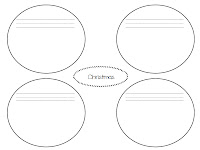Balance is a term we use with our students. We teach them this term by allowing them to have a balance of educational experiences. We make sure to fill our day with a variety of different learning modalities to reach each of their learning needs. We love when we have the opportunity to fit balance into an entire unit of study.
Our Nursery Rhyme unit was the perfect time for us to incorporate balance into our unit. We began by reading a nursery rhyme a day, finding the rhymes and completing a craft or worksheet to go along with the nursery rhyme.
We tried our best to get the kids involved as much as possible, so we had the kids color puppets and act out the nursery rhymes, as well.
One of our favorite parts of this unit is our Nursery Rhyme Olympics. We get the kids up and moving as we have them recite the nursery rhyme and complete a kinesthetic activity to go along with it. For example, we have the kids fill up a pail with cotton balls for Jack and Jill Went Up the Hill, complete a puzzle race for Humpty Dumpty, jump over yard sticks for Jack Be Nimble, play follow the leader for Mary Had a Little Lamb, and balance an egg on a spoon for Hey Diddle Diddle.
Our nursery rhyme unit is complete with a Humpty Drop. The kids create Humptys that will not break when dropped from a wall. Our principal dresses up as the King of the Land and congratulates the kids for their successful drops. The kids love making their Humptys at home with their parents and siblings.



































